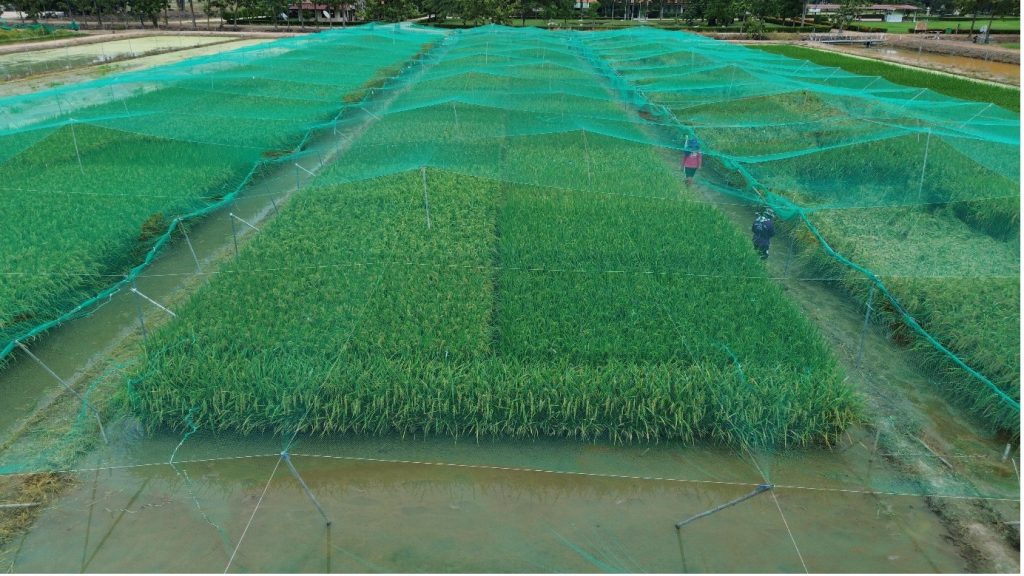Kamphaeng Phet Research Center (Thailand)
Background of Kamphaeng Phet Research Center
Kamphaeng Phet Research Station was established in 1978 where located in agricultural village of Kamphaeng Phet, Thep Nakorn, Mueang, Kamphaeng Phet, Thailand. Initially, the research station researched various crops such as maize, pomelo, rubber seedlings, and oil palm. However, from 2001 until present, the focus of research has shifted to rice varieties, chili peppers, and yellow beans. Currently, the station is engaged in research and development of rice varieties, chili peppers, and yellow beans, with a research and testing area covering 123 Rai.
Responsibilities:
Conduct research and improvement of rice varieties for using as raw materials in animal feed and consumer rice industries.
The research categorize into 6 groups of rice varieties, namely:
- Industrial Animal Feed Rice
- White Rice
- Fragrant Soft Rice
- Sticky rice
- High nutrition rice
- Hybrid Rice

Research and Improvement of Chili Varieties:
The objective is to develop chili varieties that are suitable for mechanized production covering the entire cultivation process from planting, field management, and harvesting. These varieties should have small bushy plants with short growth period, simultaneous flowering, single harvest capability, and to meet market standards. The desired heat level is moderate. The chili varieties are categorized into 4 groups:
- Large Chili
- Large Bird’s Eye Chilli
- Choe chili pepper
- Small Bird’s Eye Chilli

Research Role and Responsibilities: Conduct research in improvement of rice, chili, and yellow bean varieties. Engage in variety testing, technology development for production, and laboratory work on molecular markers.
The objective of research and improvement for soybean varieties is to obtain high-yielding, high-protein varieties that can be grown and yield in Thailand.
The objective of varietal testing is to assess the distinguished characteristics of rice, chili, and yellow bean varieties, such as yield, plant structure, and product quality. This evaluation aims to instill confidence in the commercial potential of these varieties for future cultivation and trade.

The objective of production development technology is to innovate new production methods, manage plant nutrient elements effectively, and implement strategies for disease and pest control. This is aimed at optimizing the full potential of rice and chili production, both in terms of quantity and quality of the yield.

The objective of Laboratory Molecular Marker Work is to incorporate modern technology into the research and improvement of rice, chili, and yellow bean varieties to ensure maximum efficiency. This will expedite and enhance the accuracy of the selection process for desired traits by breeders. Additionally, preliminary quality analyses of rice are conducted to provide data for selecting varieties that align with market requirements including amylase content, gelatinization temperature, and dissolution in alkali.


